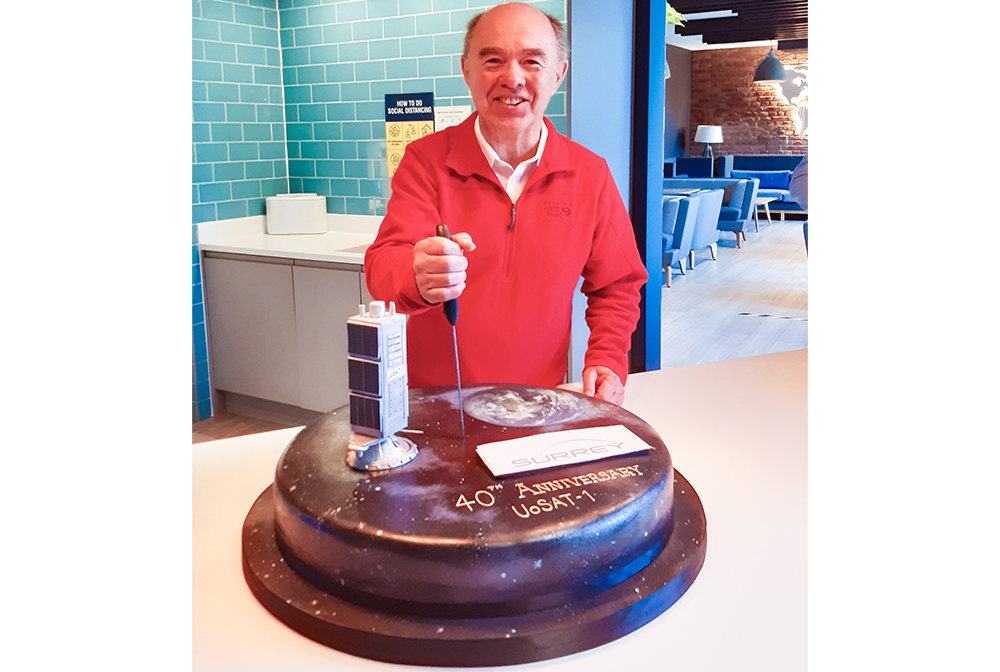
Today marks 40 years since UoSAT-1 - designed and built by Martin Sweeting and a small team of research scientists at the University of Surrey - was launched on a Delta rocket from Vandenberg Air Force Base in California. UoSAT-1 was the first modern microsatellite with in-orbit re-programmable computers and its signals were decoded and analysed by thousands of radio amateurs, schools & universities around the world.
The story of SSTL's first satellite involves a huge amount of ingenuity, teamwork, calling in favours, and cheeky but successful requests for assistance!
Beginnings
The story actually starts in 1975 when a young Sir Martin Sweeting was a student at the University of Surrey. Whilst studying for his PhD, he developed an interest in amateur radio and, along with a group of like-minded friends, he started tracking Russian weather satellites using ham radio.
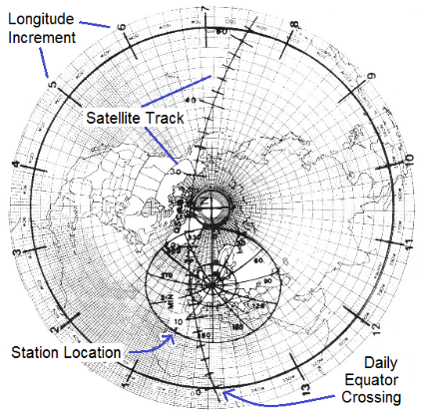
Hand-drawn satellite plot
The weather and amateur radio satellite were initially tracked by hand until Martin managed to persuade the Royal Navy to donate a gun carriage turntable that he arranged to have craned to the top of the University's BB building and voila! a cheap but effective satellite tracking antenna was in operation!
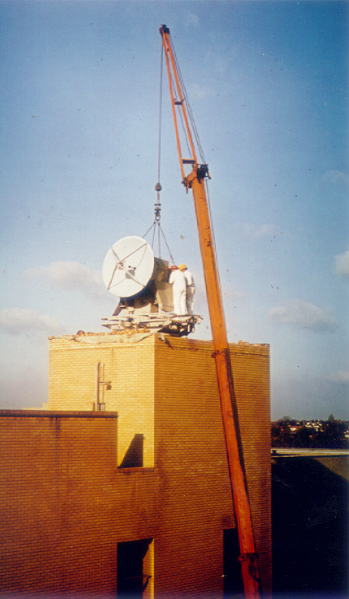
The first satellite antenna being craned into position on the top of the University of Surrey's BB Building
From these beginnings, Martin formed the idea of building his own small satellite and he led the small team to design and build UoSAT-1. The effort was helped along the way by support in advice, components and facilities donated from AMSAT (the Amateur Radio Satellite Corporation in the USA, Germany, Hungary), various companies and government research labs but also some essential funds supported by Ralph Benjamin, a visiting Professor at the University of Surrey and Director at GCHQ.
A DIY cleanroom
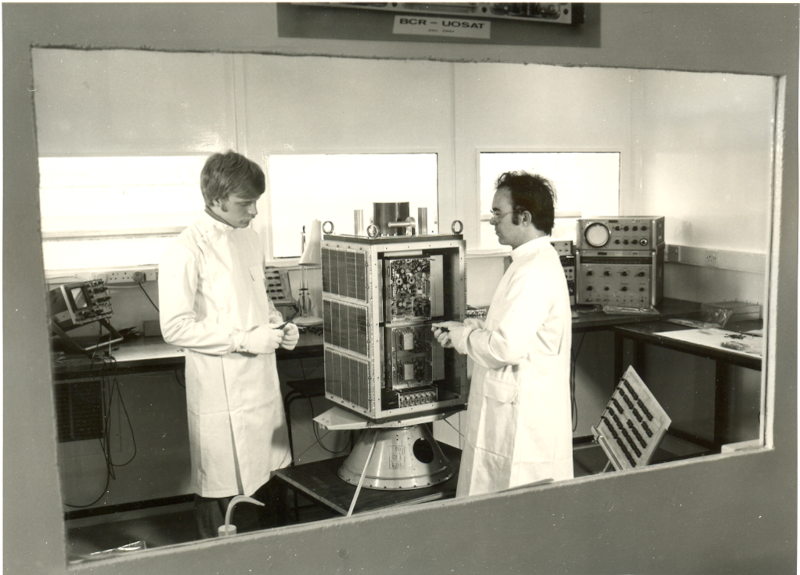
UoSAT-1 cleanroom at the University of Surrey
With the project well and truly off the starting blocks, Martin’s team nipped down to B&Q and bought 8’x4’ MDF boards and some plastic sheeting to rig up a cleanroom in the corner of one of the University of Surrey’s research labs. A vacuum cleaner in reverse-setting was used to pressurise the ‘cleanroom’ but, as Martin recalled, the cleanliness of the set-up was called into question one morning when the team arrived to find the satellite covered in tiny red spider mites! There’s an intriguing possibility that one of these spiders could have survived hidden inside the satellite’s structure, and been inadvertently launched into Space!
The satellite
UoSAT-1’s mission was research and education and the payloads on the satellite included:
- RCA 1802 and a Ferranti F100L microcomputers
(16k RAM reprogrammable in orbit) - HF beacons on 7,14,21,28 MHz for ionospheric studies
(3-metre deployable antennas) - 2GHz and 10GHz beacons
3-axis magnetometer, 20/40keV particle counters - Magnetorquers and a gravity gradient boom
VHF and UHF telemetry up/downlinks
(AFSK-FM 75-1200bps, RTTY, Morse code, ‘DIGITALKER’ digitised voice) - CCD array camera
(256x256 pixels, GSD ~2km)
The satellite was entirely hand-built, with some of the design work taking place on kitchen tables as the project progressed over long hours. The power conditioning system was contributed by AMSAT who also were key in arranging a launch on a US rocket.
A DIY vibration testing campaign!
The engineering model for UoSAT-1 was vibration tested in a typically low cost and pragmatic process which involved putting it in the boot of Martin’s car, pumping up the tyres, and driving it up and down Guildford’s historic cobbled High Street a few times!
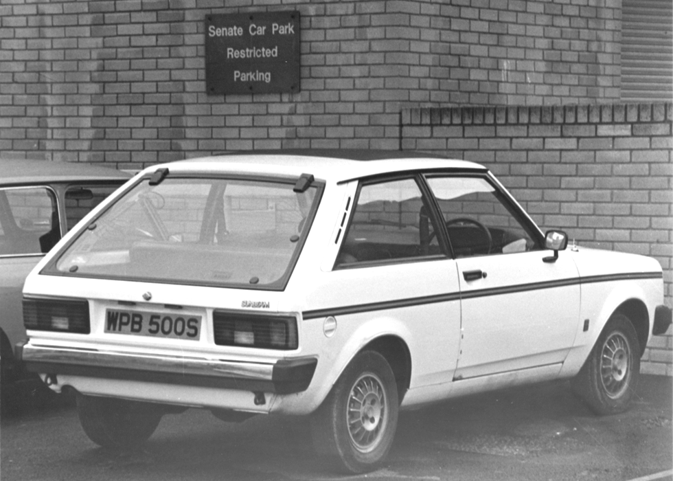
Martin's car 1980 - the vibration test chamber for UoSAT-1's engineering model
The result of the test was a change of material for the structure, and then it was onwards towards flight assembly. Martin called in more favours and a proper vibration testing campaign was completed at BAE Stevenage – now an Airbus site - and magnetic calibration was also done for free at Goddard Space Flight Centre by the scientist Dr Mario Acuna who designed the magnetometers for Viking & Voyager.
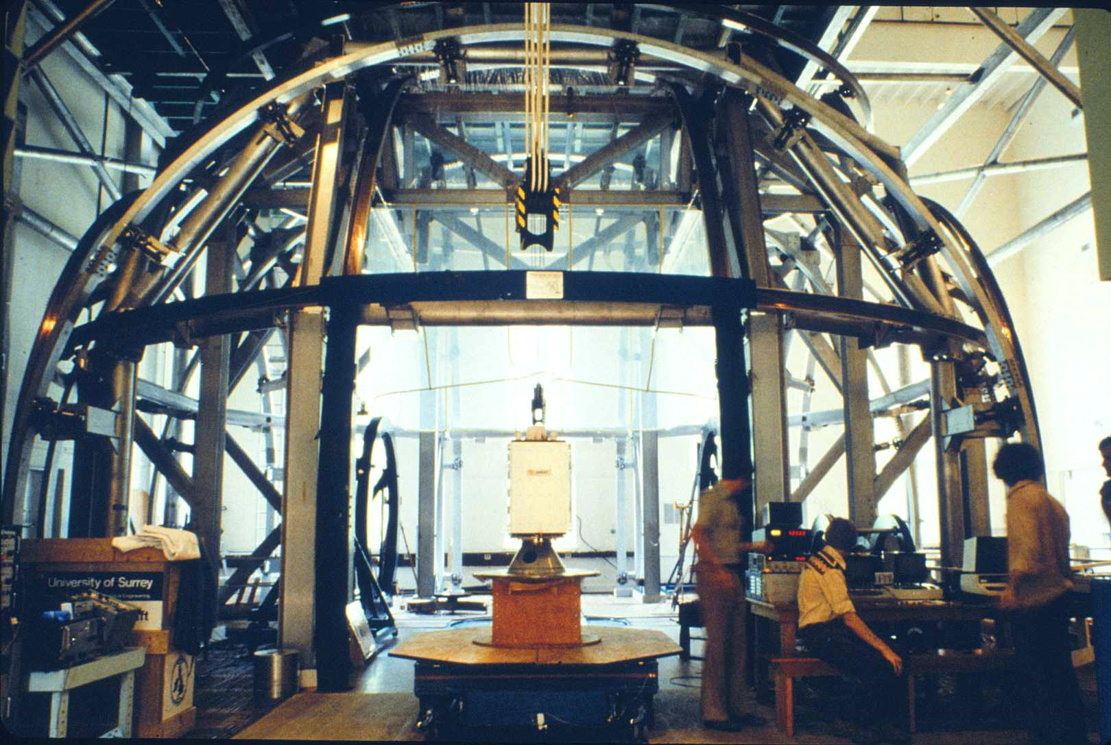
Magnetic calibration testing at the Goddard Space Flight Centre
There's no such thing as a free launch - or is there?
Launch was another example of the power of Martin’s persuasive abilities – with the help of AMSAT-USA, he copped a free NASA flight on board a DELTA rocket as a secondary payload underneath a NASA scientific satellite. UoSAT-1 was placed into a 560 km 3am-3pm sun-synchronous orbit on 6th October 1981 and in-orbit operations were conducted from the tracking groundstation at the University of Surrey. Initially UoSAT-1 was commanded in orbit by hand-generated codes uploaded using a bank of eight 0-1-0-1 manual switches but within a year the team rigged up early (8080) home computers and an array of TV monitors saved from a skip to improve telemetry displays and speed up the functions of the satellite.
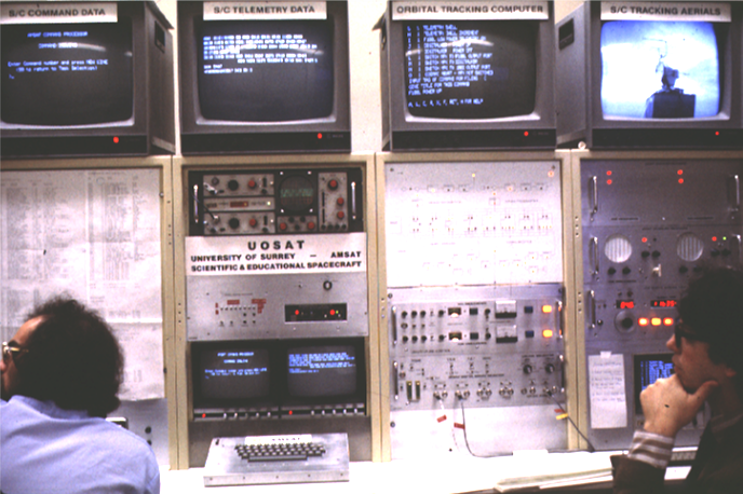
UoSAT-1 operations computer
Satellite operations and a first image
Neville Bean, SSTL’s longest serving member of staff after Martin himself, carried out many of the satellite’s operations, often late at night. The first image from UoSAT-1 was “interesting”, possibly capturing the rim of the Earth but the second image downloaded was clearly of Sardinia and Corsica - success!
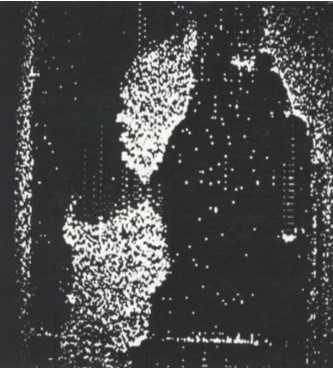 a
a
Sardinia and Corsica, imaged by UoSAT-1
UoSAT-1 was out of operation for 3 months following an operator error – where both transmit channels were inadvertently switched on simultaneously, causing signal jamming on the on-board command receivers. In another bold calling in of a favour, assisted by AMSAT US, the signal was unlocked using a powerful signal from the 3MW eirp VHF transmitter at Stanford USA.
A worldwide following
UoSAT-1 was back in the game and transmissions on 145.825 MHz VHF were received by 1000’s of radio amateurs and schools worldwide using AFSK ASCII, RTTY and the ‘digitalker’ using very simple equipment.
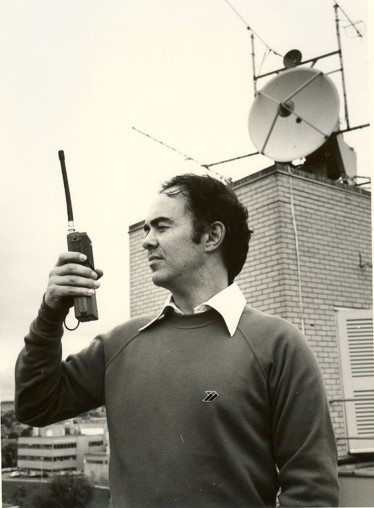
Martin receiving telemetry from UoSAT-1 via the Digitalker
Regular reports on the status of the satellite were compiled into a weekly ‘newsheet’ and broadcast by UoSAT-1 – an example of world-wide communications long before the internet.
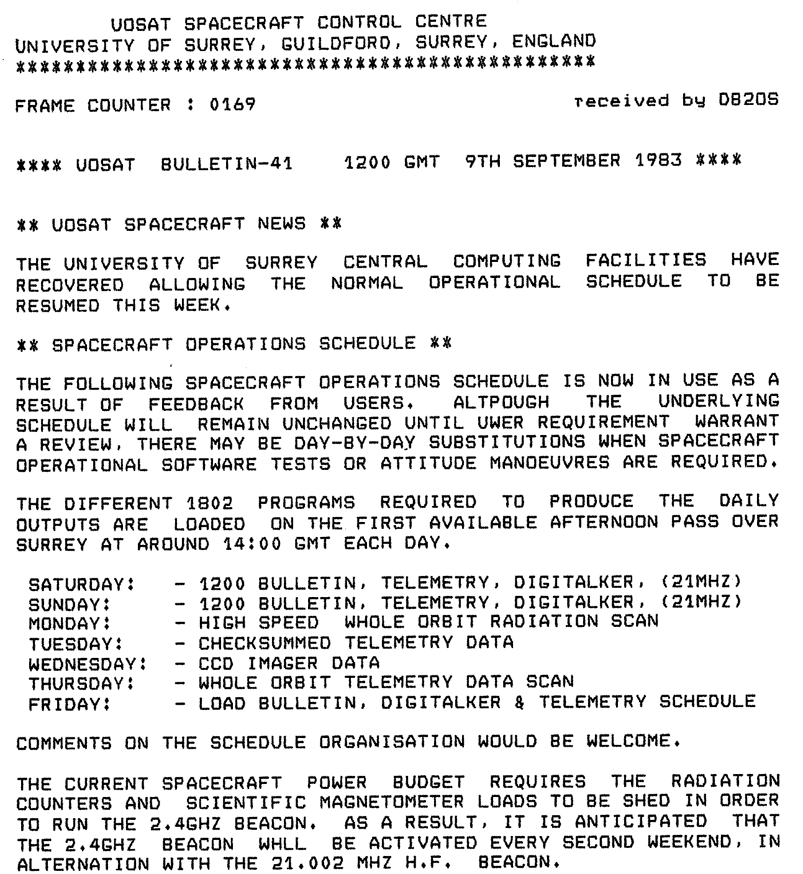
UoSAT-1 report
End game
After 8 years of operations, UoSAT-1 re-entered the Earth’s atmosphere on October 13, 1989 and burned up over the Indian ocean. It was still transmitting and telemetry was received on 145.825 MHz by radio amateurs as it re-entered.
SSTL’s philosophy of pioneering ingenuity coupled with a healthy dose of pragmatism was born from those UoSAT-1 years, and is now captured in our vision statement -
"SSTL pioneers audacious new satellite technologies, products and services and shares its know-how to enable advancement in Space."
We are extremely proud of our long and unrivalled smallsats heritage - 71 satellite missions launched, over a 40 year period on 40 launches from 9 launch sites.
Onwards!
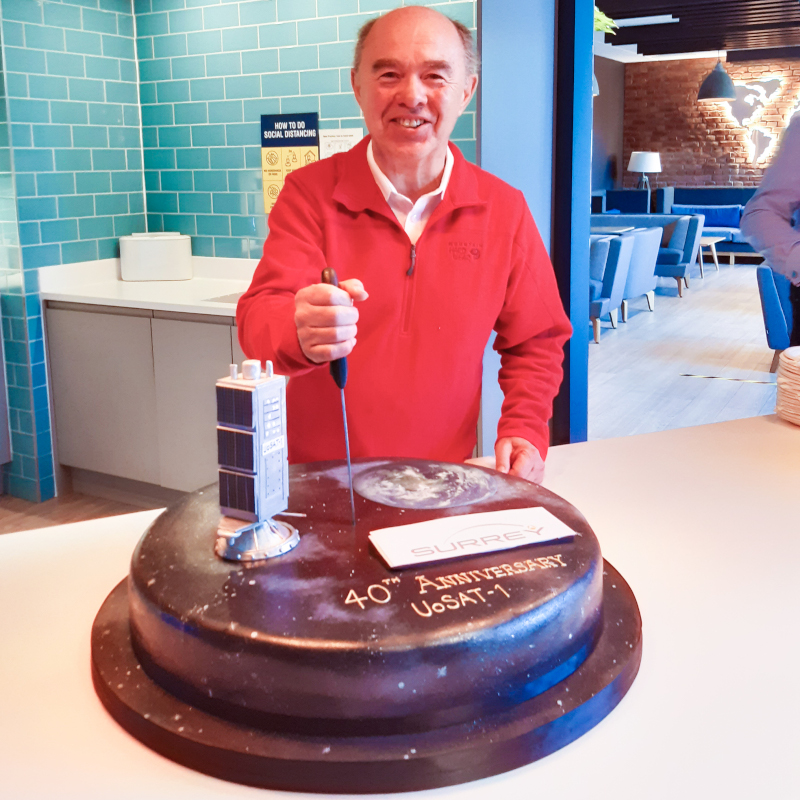
Martin gets ready to cut our epic UoSAT-1 anniversary cake, 6 October 2021